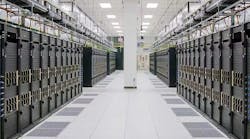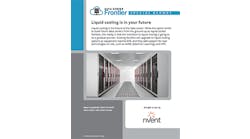Communication towers are emerging as the new frontier in edge computing, a trend that is boosting collaboration between data center companies and tower real estate specialists. Almost no one is better positioned to capitalize on this trend than Digital Bridge, a veteran of the tower industry that has built a formidable data center network through a series of acquisitions.
Two Digital Bridge portfolio companies, DataBank and Vertical Bridge, today announced plans to build a network of micro data centers at the base of cell towers. DataBank, which operates a network of colocation facilities, will provide the data center expertise. Vertical Bridge, which owns 55,000 wireless sites, will provide the real estate.
“Tower-based data centers bring the cloud into local areas and dovetail with the emerging C-RAN network architecture of the future,” said Bernard Borghei, Executive Vice President of Operations and Co-Founder of Vertical Bridge. “We’re looking forward to working with DataBank to be an important first mover in this space.”
CRAN is short for Cloud-Radio Access Network (or sometimes Centralized RAN), which uses new topologies and virtualization to reduce the cost and power draw of the network infrastructure. It’s expected to be a key component of next-generation 5G wireless networks.
Vertical Bridge isn’t alone, as it’s one of three planned networks of edge data centers at telecom towers. In June, cloud infrastructure specialist Vapor IO said it will team with tower REIT Crown Castle to create Project Volutus, a network of fully-managed micro data centers at the base of cell towers. In July, AT&T unveiled plans to deploy computing infrastructure at telecom towers, central offices and small cell antenna locations across its giant network.
All of these initiatives target the growing market for edge computing, which moves content closer to users, improving the experience for streaming video and gaming. It’s a hot trend for 2017, as the emergence of the Internet of Things and AI reinforce the need for data centers in new places.
The Missing Link in the Expanding Network
The growth in edge computing is driven by increased use of consumer mobile devices – especially consumption of video and virtual reality content – and the growth of sensors as part of the Internet of Things. As large files proliferate and end points become more distributed, the geography of data centers is changing to reflect this shift.
“In addition to improving distribution for content providers and carriers, edge computing can also create an important distribution point for the cloud at a lower cost,” said Raul Martynek, CEO of DataBank. “There’s just one jump to the micro data center at the base of the towers, so not only is the latency for accessing the cloud reduced, but it opens the possibility for real-time applications and a richer more immersive experience for end users.”
There are many different components of this shift to a data-driven world. Digital Bridge is positioned to address an evolving network architecture. As voice, data and video have shifted to wireless delivery, the traffic on wireless networks has significantly increased. Legacy wireless network architecture typically has a cloud interface at the city or regional level. As a result, traffic is transported long distances at considerable cost and with significant latency.
Vertical Bridge and DataBank say they are developing details on the type of infrastructure they intend to deploy at the cell towers.
Different Strategies, Different Visions for the Edge
The rise of edge computing is prompting the data center industry to expand well beyond the traditional “Big Six” markets – Northern Virginia, New York/New Jersey, Chicago, Dallas, Silicon Valley and Los Angeles – that have traditionally been magnets for third-party service providers. This is happening in two ways. For some providers, “edge”means more infrastructure in secondary markets. For others, the edge means cell towers and office buildings.
Over the past 18 months we’ve seen a flurry of M&A activity and new investments targeting regional “second tier” data center markets, including the acquisition of ViaWest, Cologix, 365 Data Centers, and C7 Data Centers and new lead investors for Compass Datacenters. EdgeConneX and TierPoint have continued to build out their networks of data centers in second-tier cities.
The providers targeting tower-based edge computing are led by the DataBank/Vertical Bridge partnership, the Project Volutus team of Vapor IO and Crown Castle. There’as also AT&T and DartPoints, which is building a network of micro data centers within existing office buildings.
An Eye Towards the Future
The principals in Digital Bridge are among the most experienced players in wireless real estate. CEO Marc Ganzi and Chairman Ben Jenkins founded the company after playing similar roles for a decade at Global Tower Partners (GTP), the largest privately owned operators of telecom towers. The company was created in 2002 and built a portfolio 16,000 sites before it was acquired by American Tower for $3.3 billion in 2013.
Ganzi and Jenkins founded Digital Bridge in 2013 with a “singular focus” on owning and operating communications infrastructure companies with strong cash flow. That vision started with wireless infrastructure, but extended to a broader universe of connectivity and data storage companies, including Vertical Bridge and ExteNet Systems, which provides wireless connectivity through distributed antenna systems (DAS), small cells, WiFi and radio access networks (RAN) to extend wireless signals.
“We’re bringing together two leaders of their respective fields, and the combination will be powerful,” said Ganzi, who is CEO and Co-Founder of Digital Bridge and Executive Chairman of Vertical Bridge. “This partnership is just one example of the convergence that we believe is the future of communications infrastructure, and we’re looking forward to continuing to provide more innovations like the Vertical Bridge/DataBank collaboration to support the needs of our customers.”






